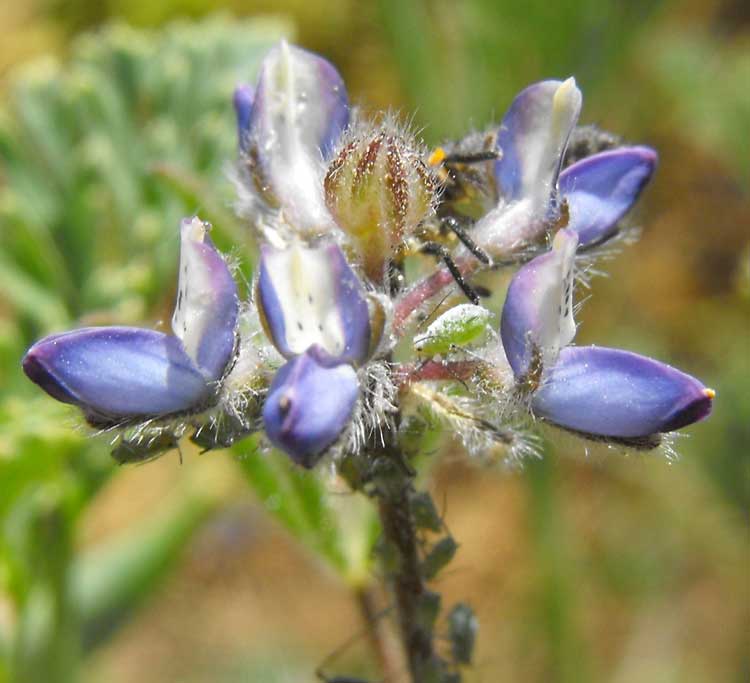
Lupinus bicolor
Cladus: Eukaryota
Regnum: Plantae
Divisio: Magnoliophyta
Classis: Magnoliopsida
Subclassis: Rosidae
Ordo: Fabales
Familia: Fabaceae
Subfamilia: Faboideae
Tribus: Genisteae
Genus: Lupinus
Species: Lupinus bicolor
Subspecies: L. b. subsp. microphyllus - L. b. subsp. pipersmithii - L. b. subsp. umbellatus
Name
Lupinus bicolor Lindl.
References
* Botanical Register; Consisting of Coloured Figures of Exotic Plants Cultivated in British Gardens; with their History and Mode of Treatment. London 13: t. 1109. 1827
* USDA, ARS, National Genetic Resources Program. Germplasm Resources Information Network - (GRIN) [Data from 07-Oct-06]. 22812
------
Lupinus bicolor is a species of lupine known as the miniature lupine, Lindley's annual lupine, or bicolor lupine. It is a showy flowering plant native to western North America from California to British Columbia. It is an annual lupine which often shares a habitat with the California poppy. It has a short, hairy stem and thin, palmately-arranged leaves. The inflorescence is short for a lupine at up to 8 centimeters tall. As its name suggests the flowers are usually two colors, with one often a deep blue. The other color is often white and sometimes a light purple or magenta. There are sometimes small speckles or spots on the petals. The plant's hairy pods are quite small, only a couple of centimeters long and very thin, and they contain tiny brownish peas. This plant can be variable in appearance and there are several subspecies whose relationships are as yet unclear.
Retrieved from "http://en.wikipedia.org/"
All text is available under the terms of the GNU Free Documentation License

